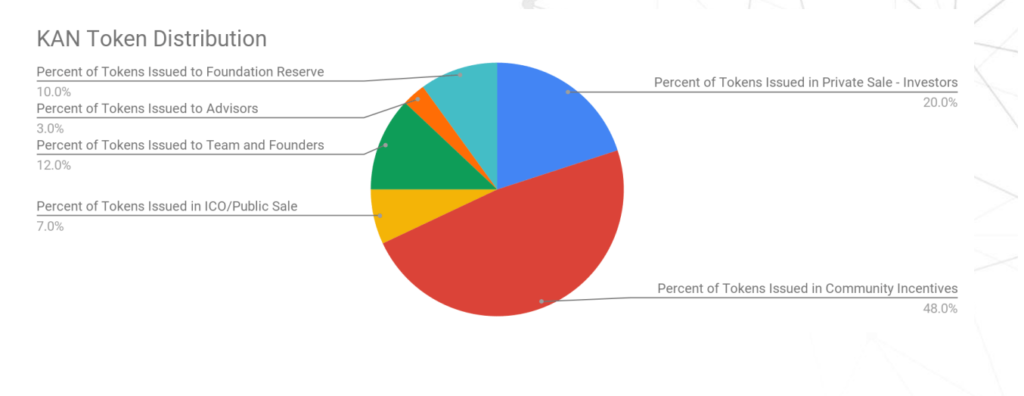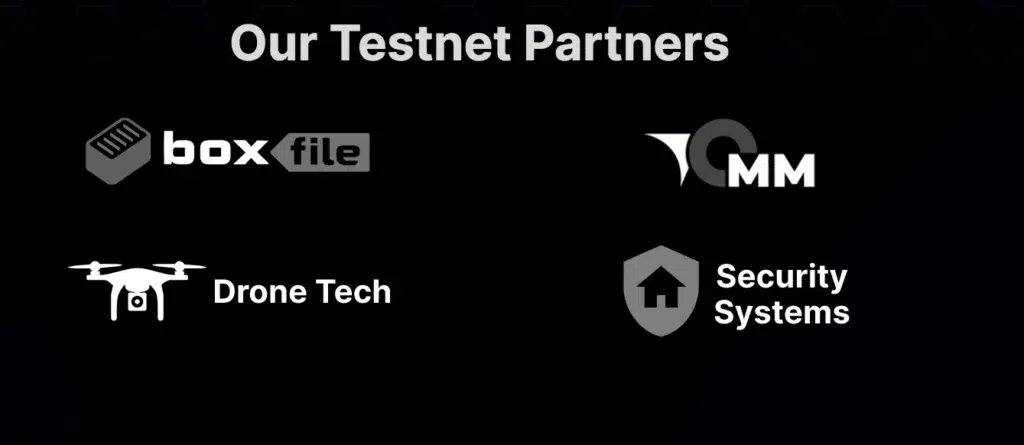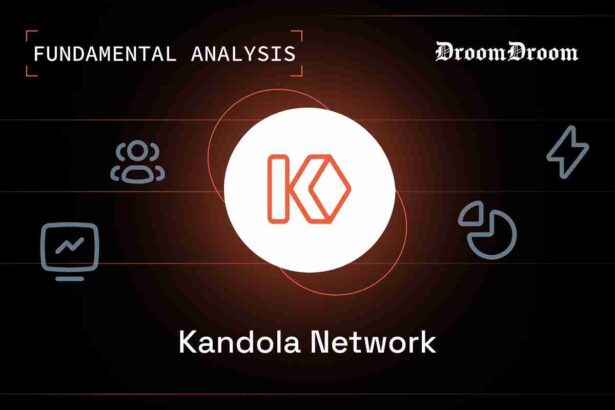Kandola Network $KAN Fundamental Analysis will talk about the need to implement proper data privacy and security mechanisms when adopting IoT technology and smart devices.
- What is Kandola Network
- Kandola Network Background
- Problems Kandola is Solving
- Cybersecurity
- Anonymity
- Excess Transparency
- Perfomance Issues
- Sequential Processing
- Block Finality
- How Kandola Network Works?
- Team Behind Kandola Network
- Siddharth Banerjee – Chief Executive Officer
- Krithika Radhakrishnan – Chief Marketing Officer
- Ragul Kumar – Chief Technology Officer
- Kandola $KAN Token Economics
- Kandola Customers
- Kandola Partners and Investors
- Conclusion of Kandola $KAN Fundamental Analysis
Weak privacy and security measures pose significant risks to real-time data storage and retrieval in an era where enterprises and existing systems are centralized and lack data integrity. No wonder, the General Data Protection Regulation (GDPR) has already surpassed $1.14B in fines across enterprises.
Even with the sheer volume of data that the IoT ecosystem has to handle, Kandola Network wants to ensure that only authenticated applications communicate with each other.
The Kandola Ecosystem is a decentralized collection of end-to-end components that either send or receive general-purpose communication, to make sure only the right transactions go through.
This Kandola $KAN Fundamental Analysis will demystify the true value of Kandola, the tokenomics of the $KAN token, the team behind the project, partners, investors, and the technology stack that sets Kandola apart from other solutions.
The Kandola Network is also inviting participants to enroll in their testnet, Apply through the form on this link. Infact, the team has already deploy testnet tokens to the Polygon Network.
What is Kandola Network
The decentralized ecosystem has a big advantage – it can keep running even if some parts are turned off. This is a powerful feature that centralized apps can’t match.
However, there’s still a problem with the decentralized model for many blockchains. Right now, decentralized apps (DApps) aren’t fully decentralized. The issue is with the data they use to understand how well the app is doing, how users behave, and what’s popular. To do this, blockchains need analytics, smart contract engines, and AI models. Without this, the DApps aren’t as good as they could be, and people might not even discover their full potential.
There’s a reason for this data disconnect. DApps can’t save their data on blockchains because it costs a fortune – for example, 1MB on Ethereum costs $17,000. Also, there aren’t any good platforms that work well with decentralized apps for managing data and doing analytics. So, DApps end up putting their data on centralized systems, which goes against the whole idea of being truly decentralized and fulfilling the promise of Web3.
In a nutshell, Kandola is a decentralized DaaS (Database-as-a-Service) that caters to DApps in the age of smart devices. In an era where digitization has transcended beyond billions of data transactions per second, Kandola is building a decentralized platform that will guarantee data security, data retrieval, integrity, and privacy.
Furthermore, the network also wants to cater to real-time storage needs and offer an advanced algorithm for retrieving the same data as soon as needed.
As such, Kandola is a decentralized data exchange, a storage database, and a data retrieval protocol that will serve DApps across healthcare, IoT, social media, and gaming. Find in the next section of the Kandola $KAN fundamental analysis more about the $KAN token.
What is $KAN?
Kandola has a native cryptocurrency called the $KAN token whose supply is capped at 1B tokens.
While we will get into the specifics of $KAN’s tokenomics in a later section of the Kandola $KAN fundamental analysis, this table for $KAN’s distribution matters here:
| Allocation | Percentage (%) | Lockup period (months) |
| Private sale | 20 | 12 |
| Public sale | 7 | 0 |
| Founders | 12 | 36 |
| Community rewards | 48 | 0 |
| Foundation reserve | 10 | 0 |
| Advisor | 3 | 24 |
The Kandola Network whitepaper says $KAN serves as a medium of transaction exchange when accessing the platform’s data storage, services, and features.
This fundamental utility is a key driver of the token’s value, rather than pegging its value on vague speculation.
As we are going to reveal, Kandola’s token design hopes to treat everyone in the ecosystem fairly. Thereby ensuring that any participant who wants to maintain the network gets their deserved incentive.
Another thing to keep note is that $KAN is the only acceptable means of payment on the Kandola Network. Many blockchains who opt for this model want the demand for their native cryptocurrencies to go high. Remember that regardless of the network’s pricing model, customers will consistently acquire $KAN tokens when paying for services.
The next section of the Kandola $KAN fundamental analysis discusses the general background and working behind the Kandola Network
Kandola Network Background
Siddharth Banerjee, Krithika Radhakrishnan, and Ragul Kumar found out that IoT devices were growing to become the least secure machines. In 2021, the trio started Kandola Network, a decentralized database protocol for safeguarding the privacy and security of IoT communication. What motivated them to pursue their vision?
Recently, the tech landscape has witnessed tremendous growth, resulting in a massive increase in data creation, storage requirements, and consumption. The global data market is now at a whopping $1.2 trillion valuation, and this growth continues to expand.
However, the surge in data volume has led to a pressing need for secure and efficient storage solutions. While centralized systems have existed long enough with their advantages, they’ve often faced issues ranging from high costs to occasional censorship and security breaches. Enter Siddharth, Krithika, and Ragul in 2021, armed with Kandola, an innovative decentralized infrastructure solution for addressing similar challenges.
Kandola enables applications to exchange, query, and analyze structured data in a decentralized manner. The platform provides a mechanism for secure and private verification, storage, and transfer of data across the blockchain. Thereby fostering the development of privacy-preserving applications.
One of Kandola’s unique features is its consensus mechanism, the Proof of Real-time Transfer (PoRT) protocol. Let’s discuss it in the next section of our Kandola $KAN fundamental analysis.
What is PoRT?
PoRT facilitates the decentralized exchange, storage, and retrieval of general-purpose data. The consensus mechanism is specifically designed for permissionless settings, where adversaries can be either static or adaptive. Thus ensuring the security, privacy, and integrity of schema-compliant data throughout the ecosystem’s lifecycle.
To enhance security, PoRT incorporates data encryption at the source, end-point authentication, and standardized (yet customizable) application-driven message formats. The protocol also enables decentralized verification of data compliance and guarantees that protocols don’t fall on the wrong side of the law.
Over the years, Kandola Network has been growing and attracting quality investments and partnerships along the way. Prominent names include Arcanum Capital, Alpha Wave Global, DroomDroom, Binance, Drone Tech, Box File, and many more.
Furthermore, the platform has unique use cases that extend across both Web2 and Web3 including the Ethereum Name Service (ENS), decentralized social media protocols, DEX exchanges, oracles, data aggregators, and decentralized B2C Dapps in Web3. KanAgri, KanAudit, KanCommerce, KanHealth, and KanMail in Web2.
Alongside building a modern pipeline for secure data, Kandola is also promoting the creation of open standards. Think of IoT device makers agreeing on data standards, ensuring devices from different manufacturers adhere to the same format.
This standardization lets app developers create apps based on structured rules without the limitation of incompatibility, hence enlarging the pie for everyone.
Kandola’s infrastructure has the potential to bring about significant positive changes in various industries. By establishing a fair marketplace and offering strong economic incentives to specialized storage providers, the platform opens up exciting possibilities for the future.

We’ve covered the background of Kandola Network. In the next section of the Kandola $KAN Fundamental Analysis, we will discuss the challenges that Kandola is solving.
Problems Kandola is Solving
As we’ve seen in the Kandola $KAN Fundamental Analysis, the key challenge Kandola aims to address is the disconnect between data storage/retrieval and the IOT industry.
AI algorithms for smart devices in this industry have to handle massive data, as such, they must adhere to a sophisticated tech stack for safeguarding the privacy and security of such data.
However, the Kandola blockchain has also come to address several other concerns owing to its robust decentralized ledger. Let’s discuss each of these below as we aim to cover everything about the network on this Kandola $KAN fundamental analysis:
Cybersecurity
Although blockchains are generally secure, it’s unrealistic to expect any system to be completely foolproof, given the constant emergence of new cybercrimes. Industry data has already proved that cybercrimes across DEFI are at an all-time high.
For private or consortium blockchains, only a few known and authorized entities have access to read, write, or modify the blocks. Thereby making it easier to deal with the effects of cyberattacks. However, public blockchains require stronger security measures, unlike private ones.
Another concern in blockchain is collusion and Byzantine behaviors, with the 2018 ACFE Fraud Report stating that almost 50% of all fraud involves collusion. Collaboration among payment processors, verifiers, and clearinghouses is common. To address this, the Kandola blockchain uses game-theoretic concepts to prevent collusion attacks and Byzantine behaviors, successfully thwarting over 20 Byzantine attacks.
Anonymity
Anonymity is a feature, not a bug for every blockchain out there. However, don’t you think there are moments when anonymity can pose significant compliance risks? For instance when conducting online voting. If companies want to transact with each other using the blockchain, most of them require the other end to be known.
Employees of such companies also require access to their physical and virtual spaces using proven identity. Kandola found a way to balance between anonymity and ‘auditability’ using advanced digital verification technologies like Soulbound Tokens (SBTs) and Self-Sovereign Identity (SSI).
To ensure a consistent balance between anonymity and ‘auditability’, Kandola made sure to support SSI from the start. As a result, all components of the Kandola Network have implemented the Decentralized Identifier (DID) to streamline identity verification.
Excess Transparency
Organizations have to comply with regulations and safeguard sensitive data. However, the blockchain is by default public and the information is transparently visible to all participants. This results in a level of risk to highly sensitive information.
Kandola noticed that too much transparency on public blockchains could become detrimental to organizations. Remember, organizations need to safeguard certain information, not only for compliance’s sake but to also gain a competitive advantage. Take for instance organization information regarding acquisitions or partnerships that are highly confidential.
In such cases, traditional blockchains might fail incredibly since they haven’t quite figured out ways of filtering public relevant info from highly sensitive. The Kandola blockchain figured this out at the start to support encryption of data until the user authorizes a decryption.
Perfomance Issues
There is a famous trilemma called the blockchain trilemma that prevents big blockchains from achieving high perfomance without sacrificing one of scalability, decentralization, and security.
Only a few public blockchains can match the strong perfomance of private blockchains. This is because a leading public blockchain like Ethereum has a high throughput for sacrificing decentralization and security. For other blockchains like Bitcoin, transactions are significantly expensive due to the high cost of validating blocks. Without sacrificing any of scalability, security, and decentralization, Kandola utilizes parallel side chains and sharding to achieve high perfomance.
Sequential Processing
As you might have noticed, all solutions by Kandola reflect the underlying concerns facing the IoT industry. Blockchains process transactions on a single chain sequentially. This poses a significant issue around inefficiency and slow perfomance.
Kandola uses parallel chains that support parallel transaction processing. The framework usually identifies unrelated transactions and executes them in parallel. As such, the network achieves speed, low latency, and stronger perfomance. Since Kandola aims to serve multiple domains at the same time, the blockchain clusters transactions according to their domain. The blockchain network can operate multiple transactions through its parallel chains at once.
Block Finality
A block achieves its final confirmation when it becomes immutable and irreversible depending on its consensus mechanism. If the network adds two valid blocks with distinct transactions simultaneously, the blockchain undergoes a temporary branching. Mining nodes generate new blocks on both branches until the longer branch prevails, rendering the blocks on the shorter branch orphaned after the branching point.
As a result, transactions within blocks added to the shorter branch go back to the mempools. This concept is known as probabilistic finality, and it is widely adopted across most blockchains. To put it simply, a payment that initially appears perfectly valid to a seller may later become invalid.
The Kandola blockchain uses a deterministic finality, a concept that ultimately eliminates uncertainty around transaction finality by having a single leader node create a block and obtain consensus from the majority of nodes.
How Kandola Network Works?
Kandola is a Layer 1 blockchain solution that uses a Proof of Stake (PoS) consensus mechanism and has a native token called $KAN whose total supply is capped at 1.5B.
The company is working on a decentralized IoT network protocol, focusing on data storage, retrieval, privacy, and security. According to Siddharth, the company’s CEO, they are developing an IoT3 network for real-time transactions. This third-generation IoT network will provide scalable data, allowing users to easily exchange information with other apps.
Aside from the decentralized protocol, Kandola is also creating firmware for hardware devices. The Kandola SDK (software development toolkit) will function as a server, accessible on both mobile and web platforms. To enhance user convenience, the company aims to offer a comprehensive end-to-end solution with a ‘Chip-to-Cloud’ approach. This approach ensures secure data transfer to a decentralized cloud using reliable hardware.
By implementing a comprehensive solution, users become the rightful owners of their digital data. While talking to DroomDroom, Siddharth emphasized their goal of creating an economic model that allows users to trade their data for value.
Noteworthy features for Kandola’s network include Web3 real-time storage and analytics persistence, Web3 Implicit NFTs for each transaction/message, and Web3 digital identity for individuals, entities, and devices.
Team Behind Kandola Network
Before coming together to build Kandola, Siddharth, and Sriram worked as software developers at SunGard while Krithika was Vice President for fixed-income derivative Operations at investment giant Goldman Sachs. This was around 2006.
10-years later in 2016, the three decided to build a firm catering to IoT solutions. This is how they started Cosine Labs, an automation firm for developing IoT products and comprehensive smart living solutions. In their time at Cosine Labs, the team realized the disconnect between data safety and the Internet of Things, which prompted them to launch Kandola Network in 2021. They derived the name Kandola from a Sanskrit word that means ‘safe house’, a ‘safe house’ for maintaining security and privacy across the Internet of Things space.]

Siddharth Banerjee – Chief Executive Officer
Before Siddharth co-founded Cosine Labs and Kandola Network, he was a scrum master in a highly talented team at SunGard. Siddharth spends most of his time running Kandola Network and steering Cosine Labs to the future. He believes that while global regulations could be a step in the right direction for IoT and data, practical web3 solutions are the ideal steps.
Siddarth also had stints as a software development lead at MphRx (My Personal Health Records eXpress) between 2012 to 2014. From 2014 to the end of 2015, he joined Wow Labs as a Chief Technology Officer. At the start of 2016, he went on to start Cosine Labs alongside his two co-founders, Krithika and Sriam.
Besides his work at Kandola and Cosine Labs, Siddharth is also a member of The Built World Technology Alliance, an organization that aims to steer India’s real estate industry through the digital revolution.
Krithika Radhakrishnan – Chief Marketing Officer
Krithika Radhakrishnan currently serves as the Co-founder and Chief Marketing Officer at Kandola Network. Leveraging her extensive experience from previous roles at Cosine Labs, KritZane Kaleidescope, and Startup Leadership Program. Krithika brings a wealth of knowledge to her current position.
She earned a Bachelor of Science (BS) degree from Stella Maris College from 2003 to 2006.
Krithika possesses a diverse skill set, including proficiency in Business Networking, Leadership, Microsoft Office, Art, Customer Service, and more. Her contributions to the industry are marked by valuable insights and expertise.
Ragul Kumar – Chief Technology Officer
Rayul is an esteemed technology leader who brought a wealth of experience to Kandola Network as a Chief Technology Officer. The CTO is a hands-on technologist with over two decades of experience in diverse environments, spanning Fortune 500 giants to nimble startups across various industries. A versatile technology executive, specializing in the entire software development lifecycle, from product management, and user experience to engineering leadership.
Ragul’s track record includes successfully delivering large-scale software products, services, and platforms utilizing deep technologies such as AI/ML and cloud computing. According to his Linkedin, the CTO excels in leading diverse, globally dispersed teams, showcasing a prowess in management, research, system design, and programming.
His contributions extend beyond practical application, with four patent applications and numerous IEEE publications in computer science. These endeavors have not only translated research into impactful products but have also driven a remarkable 3X increase in adoption.
The next section of the Kandola $KAN fundamental analysis discusses the network tokenomics.
Kandola $KAN Token Economics
This Kandola $KAN fundamental analysis could be incomplete without a breakdown of Kandola Network’s token economics. We discuss these details below, including the network’s revolutionary pricing model.

$KAN Utility
$KAN, an ERC-20 token, plays an important role in transacting on the Kandola Network. Particularly, users pay for data access and storage using the token.
This utility is a big reason why the token holds value. According to the whitepaper, the team envisioned providing a fair value across all stakeholders beyond mere crypto speculations. If users were going to pay for data access using $KAN, investors would also trust the coin for long-term hodling.
The team knew dealing with unpredictable prices and protecting against sudden changes would be a challenge. In the past, unexpected price swings in the crypto space led to high service costs for users. Hence, Kandola figured out the need to tackle this challenge, keeping the platform user-friendly and economically sound, no matter the state of the cryptocurrency market.
To predict future token values, Kandola uses a model called the monetary equation of exchange, a well-established method for running simulations that helps determine how the token’s value might change in different situations, thereby setting an equitable standard for fair pricing. Therefore, even if the price of $KAN rises to the same height as Ethereum, Kandola wants the cost of using its network to always remain the same. How do they achieve this? Stablecoin coin pricing.
Kandola Pricing: Stablecoin Model
Using a blockchain’s service can increase the price of its token, but this can make the service more expensive too when the token’s value rises.
Ethereum is an example, where the rising Ether (ETH) price led to high transaction fees, hence restricting access, particularly for small transactions.
Kandola has worked hard to avoid this by pricing services in stablecoins, and not the token’s price.
This gives predictable costs, protecting customers from token price swings. Even though the price is in stablecoins, payment is the equivalent of the $KAN token, hence maintaining the token’s value. This stable pricing has several benefits:
- Maintains $KAN’s buying pressure
- Predictable Return on Investments (ROI)
- Separating investments, such as infrastructure costs for users and staking for investors.
- Ease of onboarding
- Simplifies global transactions
- Ensures price stability
Learn about staking rewards on Kandola in the next section of the Kandola $KAN fundamental analysis.
$KAN Token Staking Pools
Staking Pools make the Kandola Network stronger by letting people team up to validate transactions and secure the network, earning rewards together. This way, even if someone has fewer tokens, they can still be part of it and earn rewards, making the network fairer and more decentralized.
Creating and Joining Pools
Anyone on Kandola can start a staking pool, and others can join by staking their tokens. The pool leader helps in decision-making and earns a share of the rewards. This way, even if someone doesn’t have many tokens, they still get a chance to earn.
Rewards and Sharing
The network distributes all rewards on the pool among its members based on how many tokens they’ve staked. The pool leader usually gets a bit more because of their extra responsibilities.
Governance and Safety
A high-precision smart contract manages pool decisions and rewards, ensuring fair and decentralized control. Penalties apply to pools too for the sake of discouraging any bad play among leaders and members.
Economic Role
Staking pools are crucial for a healthy network. The pools distribute tokens around, encourage active participation, and help boost the network’s security.
Pools also stabilize the token value by keeping more tokens in one place, reducing circulation, and maintaining a strong buying demand.
Pools and Token Velocity
As the Kandola Network keeps growing, staking pools remain a crucial part of the ecosystem. Even as rewards decrease, pools keep the network secure and sustainable. They’re a key part of the network’s long-term success, adapting to changes in how tokens work.
Kandola Customers
In this section of the Kandola $KAN fundamental analysis, we will evaluate the customer journey on the Kandola Network and see how one moves from prospect to recurring customer.
On Kandola, customers pay for the decentralized database and analytics services they use using $KAN. However, we mentioned earlier that the pricing model is such that the customer converts the cost from stablecoin to the Kandola $KAN token. These services have two main costs:
- Storage (for preserving data)
- Query/access (for processing queries and updates).
The Customer Journey
Step 1: Request for Storage Proposal (RSP)
Customers specify their storage needs and how often they’ll be using the service. This is called the Request for Storage Proposal (RSP). The network handles other technical details in the background.
Step 2: Cost Calculation and Minimum Stake
The network calculates the cost based on the RSP and chosen billing period. Usually, Kandola determines a minimum stake, which acts like a payment guarantee similar to a credit card in traditional payments.
Step 3: Database Node Response
The network then shares the RSP across all database nodes. Nodes that are capable of adequately meeting the storage needs respond with an RSP Response (RSPR).
Step 4: Formalizing Storage Contract
If the customer agrees to the RSPR, the network creates a storage contract between the customer and the database nodes. This sets up the customer’s environment thereby starting a new chain and activating database services.
Step 5: Staking and Locking
The contract execution involves staking the amount in step 2, which got locked during the specified billing period.
Step 6: Start Using the Services
At this point, the customer can now interact with the Kandola Network for whatever data needs they have.
Step 7: Billing Period End
At the end of the billing period, the network sends an invoice to the customer depending on the storage size and data queries. The billed amount is deducted from the customer’s stake. As a customer, one needs to always top up their stake at the end of their billing cycle.
Step 8: Node Compensation
The network deducts the sum and distributes it across the nodes based on their contributions to storage and data access services.
Kandola Partners and Investors
Kandola has backing from prominent investors across tech and Web3.
Polygon Founder Sandeep Nailwal, Ethereum Push Notification creator Harsh Rajat, Mayur Relekar the founder and CEO of Arcana Network, and a list of venture capital firms that helped raise $450,000 in pre-seed capital. These firms include:
- Arcanum Capital
- Alpha Wave Global
- Cogitent Ventures
- BKEX Labs
- Ascent Advisors
Kandola Network has also established several other partnerships across dozens of exchanges, crypto aggregators, trackers, and media platforms including DroomDroom, Binance, Entrepreneur, Coinmarketcap, Tech in Asia, and so on.

Looking Ahead: Key Developments
Testnet Tokens on Polygon
The team has already deployed Testnet tokens on the Polygon network. This suggests that Kandola is testing its token functionality and features in a controlled environment before launching on the mainnet.
Smart Contracts for Payment, Escrow, and Onboarding
Furthermore, the team announced the development and implementation of smart contracts that are key to payments, escrow, and onboarding functionalities. These functionalities are vital components for driving interactions and transactions across the platform.
Committee for Node Provider Incentive Model
The team was also pleased to announce the formation of a committee to decide the incentive model for the three types of node providers. This indicates that Kandola is taking a proactive and collaborative approach to determine how it will distribute rewards and incentives among different node providers, ensuring a fair and effective system.
Conclusion of Kandola $KAN Fundamental Analysis
The addition of personalized knowledge-based oracles, referred to as “self-oracles,” suggests that Kandola is incorporating a feature that allows nodes to generate or provide information based on their own knowledge.
As the January 2024 launch date for Kandola approaches, a wave of enthusiasm is sweeping through potential customers who are eagerly lining up for what promises to be a transformative mainnet launch.
The project, recognizing the value of its early supporters, is offering enticing incentives to those who join the journey from the outset.
Adding to the excitement, the network has already deployed airdrop contracts, hinting at additional surprises in store. With the official launch slated for January, now is the perfect time to secure your spot in this innovative venture.
Visit the website and sign up today to ensure you don’t miss out on the possibilities Kandola is set to unleash.
As we continue to witness the vulnerabilities of centralized systems and the inherent risks across smart devices, the Kandola Network emerges as a genius solution for data storage across Web3 and the Internet of Things space.
Increasing incidents of hacking into devices such as cameras and baby monitors serve as a stark reminder that the protection of privacy can no longer be an afterthought. Alot of devices, apps, and tools have permeated our daily lives. The incident on the Washington Times where a hacker took over a baby monitor at night and shouted profane words; serves as one of the reminders to take bold action against device security.
The global awareness surrounding data privacy and security breaches is reaching new heights, prompting the implementation of stringent IoT cybersecurity laws worldwide. As we have read on this Kandola $KAN fundamental analysis, the Kandola Network recognizes the urgency of the situation and stepped in as a revolutionary infrastructure for tackling data integrity across smart devices.
The network is not only addressing the pressing issues of data privacy and security but goes a step further by making sure IoT solutions on its platform are compliant.
In an era where enterprises grapple with the repercussions of mishandled data and citizens demand greater control over their privacy, Kandola Network stands as a complementary tool for IoT hardware, chat apps, Dapps, real-time NFTs, metaverse tools, web3 games, and many others. Kandola Network not only responds to the challenges of today but also pioneers a path toward a more secure tech-driven future. This is evident as we’ve seen throughout the Kandola $KAN fundamental analysis.



















